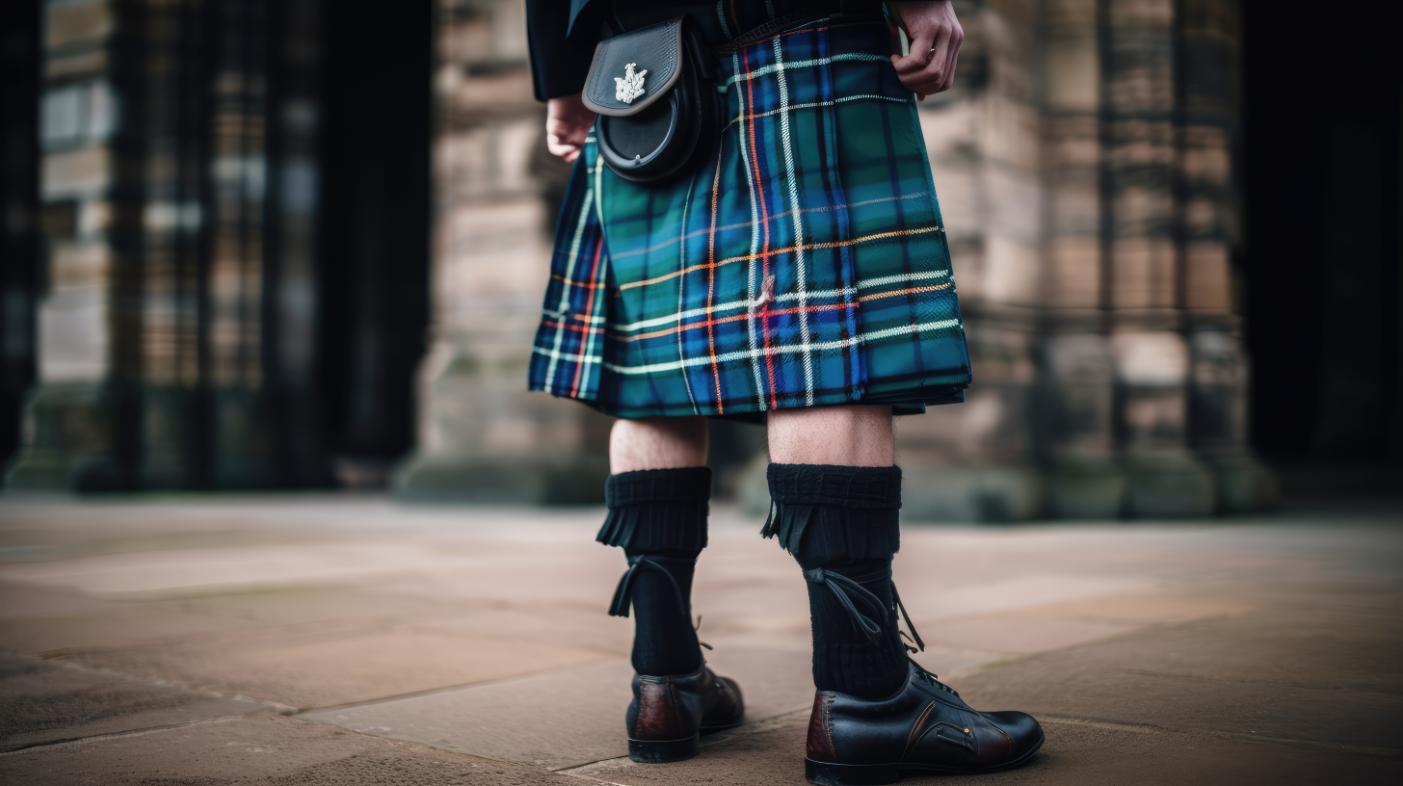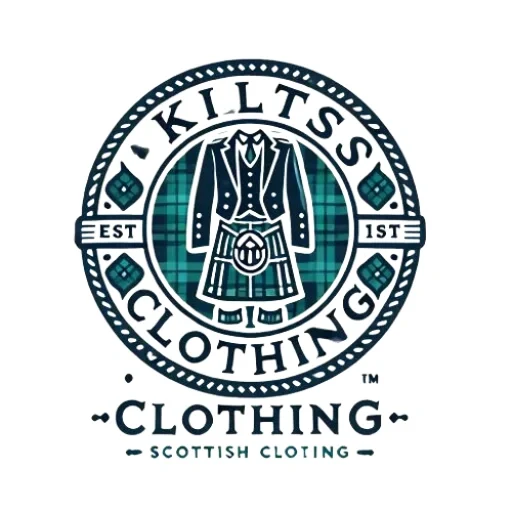How Kilts Clothing Became a Symbol of Rebellion and Individuality

The kilt, a timeless garment synonymous with Scottish heritage, has evolved significantly throughout history. Originally worn as a traditional piece of clothing, it now serves as a bold statement of rebellion and individuality. While the kilt once represented national pride and cultural tradition, its transformation into a symbol of personal freedom, resistance, and uniqueness reflects the ever-changing landscape of fashion and self-expression. This blog explores how kilts, especially from brands like Kilts Clothing, became an icon of rebellion, individuality, and empowerment.
The Historical Roots of the Kilt
The journey of the kilt began in Scotland, where it was initially worn as part of the Gaelic-speaking Highland culture. The early form of the kilt, known as the great kilt or belted plaid, was a practical garment. It consisted of a large piece of woolen cloth wrapped around the body, providing warmth and protection against the harsh Scottish weather. The kilt was a symbol of Scottish identity and unity, with different tartan patterns representing various clans.
However, the kilt's association with rebellion began during the Jacobite Rebellion of the 18th Century. As Scottish Highlanders fought for independence from British rule, they donned their kilts as a symbol of defiance against the English crown. The kilt became a visual emblem of resistance and pride in one's Scottish heritage.
The Kilt’s Transformation into a Symbol of Rebellion
In the aftermath of the Jacobite Rebellion, the British government enacted the Dress Act of 1746, which prohibited the wearing of the kilt to suppress Scottish culture. The kilt, once a symbol of national unity, was now considered a symbol of rebellion. This ban fueled its association with defiance and resistance, transforming the garment from a simple piece of clothing into a powerful political symbol.
Even though the ban was eventually lifted, the kilt continued to carry with it the spirit of rebellion. In the 19th and early 20th centuries, as the industrial revolution took hold and mass-produced clothing became the norm, the kilt fell out of everyday use. But it never lost its rebellious edge. The kilt was occasionally worn by those who sought to honor the memory of Scotland’s fight for freedom.
The Kilt’s Revival in the 20th Century
The true revival of the kilt as a symbol of rebellion came during the mid-20th Century, when countercultures began to embrace it as a way to challenge societal norms. The punk rock movement in particular played a significant role in the kilt’s reinvention as a symbol of defiance. Punk fashion was all about breaking free from the constraints of mainstream culture, and the kilt, with its bold patterns and historical associations with resistance, fit perfectly into the punk ethos.
In the 1970s and 1980s, bands like the Sex Pistols and The Clash began to incorporate kilts into their wardrobes, solidifying their connection to anti-establishment sentiment. Punk musicians and fans alike saw the kilt as a way to reject the conformity of mainstream fashion and embrace a more rebellious, edgy aesthetic.
A shift in its purpose accompanied the kilt’s punk resurgence. No longer just a symbol of Scottish nationalism, the kilt became a universal symbol of rebellion, adopted by individuals across the globe who were eager to break free from tradition and express their own unique identity.
Kilts in Pop Culture: A Statement of Individuality
Kilts didn’t just stay within the confines of the punk movement. Over the years, they found their place in popular culture, particularly in films, music, and celebrity fashion. The 1995 film Braveheart, which dramatized the life of Scottish hero William Wallace, further cemented the kilt’s association with defiance and resistance. The film’s portrayal of Highland warriors wearing kilts during their fight for independence reignited interest in the garment, particularly among young people drawn to the idea of rebellion.
Kilts became a symbol of individuality, standing in stark contrast to the standardized, mass-produced clothing of the time. Celebrities and musicians, like David Bowie and Johnny Depp, embraced kilts as a way to express their unique personalities and challenge conventional fashion trends. Whether on the red carpet or at concerts, wearing a kilt became a way for individuals to carve out their own identity in a world that often pressures conformity.
Today, kilts continue to appear in popular media, worn by icons such as Kanye West and Harry Styles, who use them to challenge traditional gender norms and celebrate their freedom. This cultural shift has transformed the kilt into a symbol of self-expression, individuality, and a rejection of societal expectations.
Kilts as a Fashion Statement for the Modern Individual
The kilt’s transformation from a traditional garment into a symbol of rebellion and individuality has been accompanied by a shift in its design and wearability. Today, kilts come in a wide variety of styles that cater to different tastes and lifestyles. Brands like Kilts Clothing have played a pivotal role in this transformation, offering a range of kilts that blend tradition with modern sensibilities.
Utility Kilts
Utility kilts, for instance, combine the traditional Style of the kilt with the practicality of modern clothing. Featuring pockets and durable fabrics, utility kilts are designed for everyday wear. They are particularly popular among individuals who value comfort and functionality. These kilts are a reflection of the modern-day rebel: someone who values both Style and practicality, and isn’t afraid to make a statement.
Denim and Hybrid Kilts
Another popular trend is the denim kilt, which offers a more casual, contemporary look while maintaining the kilt’s distinctive silhouette. Denim kilts are a favorite choice for individuals who want to add a modern twist to a classic piece of clothing. Similarly, hybrid kilts incorporate elements of traditional Scottish design with contemporary fabrics and fits, making them accessible to a broader range of people.
Leather and Military Kilts
For those looking for a more rugged and edgy look, leather kilts and military-style kilts offer a bold, rebellious aesthetic. These kilts are often worn by individuals who want to make a strong, personal statement. Whether it’s for festivals, performances, or just everyday wear, these kilts empower individuals to embrace their unique Style and showcase their personality.
The Kilt as a Rebellion Against Mainstream Fashion
The kilt’s most significant role in modern society is its ability to serve as a rebellion against mainstream fashion. In a world where trends are constantly changing, the kilt stands as a symbol of timeless individuality. Wearing a kilt is a rejection of cookie-cutter fashion and a celebration of personal freedom.
For many people, the kilt is more than just a piece of clothing; it is a statement of independence. By choosing to wear a kilt, individuals embrace a garment that defies traditional fashion norms, often opting for something that is not only bold and striking but also rich in cultural history. In doing so, they express their desire to be free from the constraints of modern, mass-produced fashion.
The Role of Kilts in Shaping the Modern Narrative
Kilts Clothing has played an instrumental role in shaping the modern narrative of the kilt. As one of the leading online stores offering a wide variety of kilts, the brand has been at the forefront of making kilts accessible to a global audience. Whether it’s through their hybrid kilts, denim kilts, or classic wool kilts, Kilts Clothing celebrates individuality, self-expression, and freedom of choice.
The store’s diverse range of styles allows individuals to choose a kilt that reflects their personality and lifestyle, whether they’re seeking something traditional, modern, or functional. Kilts Clothing also promotes the idea that kilts are not just for special occasions, but can be worn as everyday wear, offering both comfort and Style.
Conclusion
The kilt has come a long way from its humble origins in Scotland. From being a symbol of resistance during the Jacobite Rebellion to becoming a global fashion statement, the kilt has transformed into an enduring symbol of rebellion and individuality. Brands like Kilts Clothing continue to shape this narrative by offering kilts that empower men wearing kilts to embrace their style and reject conformity.
As the world moves towards greater self-expression and acceptance of diverse identities, the kilt remains an iconic symbol of personal freedom. Whether worn as a protest against societal norms or simply as a way to express one’s unique personality, the kilt will always stand as a timeless reminder that fashion is not just about following trends—it’s about embracing who you are.


